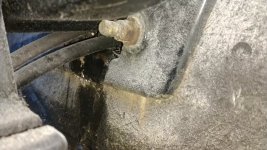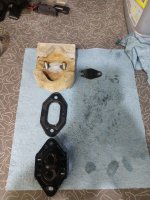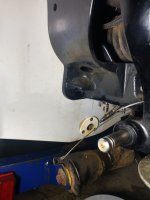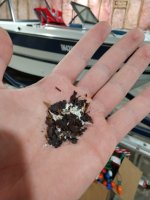mkane8301
Cadet
- Joined
- Nov 6, 2024
- Messages
- 8
Hello everyone, I am new to both boating and the forum and am excited to join the community. A friend and I purchased a 1995 glassport 170 at the start of the summer. It is running a mercruiser 3.0LX and an alpha one gen II outdrive. We spent all season getting the engine up and running and did our first water test last weekend. We were a bit disappointed to see water leaking into the bilge through the cutout at the very bottom of the transom where the hydraulic hoses exit the boat.
I am looking for advice on what could be causing this leak. I have seen many sources that mention it could be the bellows (the ones that are installed are likely the original ones, making them 30 years old) but I was wondering if it's possible that the leak could be coming from somewhere else since, to my knowledge, those hoses are not actually routed through any of the bellows on the alpha one. I have attached a still frame of the leak as well as a link to the best video I could take of the leak in the tight space.
I am hoping that if it's possible that the leak is coming from somewhere else I could avoid dismantling my entire outdrive to replace the bellows, at least for a little while to test the engine and the outdrive in the water. However, if that is the most likely source of the problem I am more than happy to do so.

I am looking for advice on what could be causing this leak. I have seen many sources that mention it could be the bellows (the ones that are installed are likely the original ones, making them 30 years old) but I was wondering if it's possible that the leak could be coming from somewhere else since, to my knowledge, those hoses are not actually routed through any of the bellows on the alpha one. I have attached a still frame of the leak as well as a link to the best video I could take of the leak in the tight space.
I am hoping that if it's possible that the leak is coming from somewhere else I could avoid dismantling my entire outdrive to replace the bellows, at least for a little while to test the engine and the outdrive in the water. However, if that is the most likely source of the problem I am more than happy to do so.

























